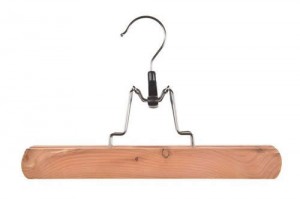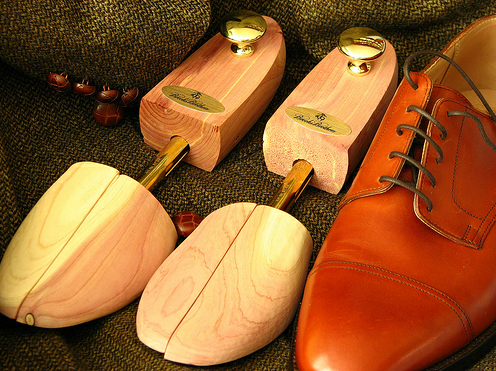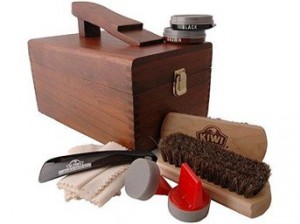Whether you are new to mens style or a veteran, there comes a time when, through the barrage of differing opinions, any man may become confused as to how to care for and store their nicer garments.
Today, we’re going to create a clear-cut, but simple, guide to taking care of your
First and foremost, the jacket

This is the largest and most noticed part of the package. It is also, unfortunately, the most improperly cared for. Most men hang their
To put it simply, the first rule of jacket hanging is “do not use thin hangers.” The second rule of jacket hanging is “do not use thin hangers.” Typically, a width between 1.5” and 2” is great. It will keep your suit’s shoulder pads in proper shape and free of creases, which in turn will make your suit look great.
Try to opt for cedar hangers as well; these will help prevent moths from eating your suit, absorb moisture, and give it a nice, manly scent. Also, try to keep the storage area cool and dry. The last thing you want is a moldy, moth-chewed suit. Use a dehumidifier if necessary.
If you’re worried about dust, simply cover the suit with the plastic bag that came with it or a garment bag.
Next up, the pants
 Suit pants are different and a bit more relative, but I prefer to use a clamp-style pants hanger. A clamp-style (pictured right) is basically a hanger hook with two strips of wood that clamp together. The pants are folded along the pleats (if applicable) and hung from the bottoms, between the clamp.
Suit pants are different and a bit more relative, but I prefer to use a clamp-style pants hanger. A clamp-style (pictured right) is basically a hanger hook with two strips of wood that clamp together. The pants are folded along the pleats (if applicable) and hung from the bottoms, between the clamp.
Clip-style hangers hang the pants from the waist and also fold along the pleats, but sometimes aligning them this way is a little difficult.
Finally, a normal hanger where the pants are folded along the pleats and folded in half over the hanger’s bar.
I personally prefer the clamp-style as these are the simplest to use and the easiest to align pleats. No matter which hanger style you choose, remember that cedar is always the best and worth it for paying a few bucks extra.
Finally, and applicable to both articles of clothing: never, ever iron the jacket or slacks yourself. Always have them professionally pressed. This service is usually free, or a nominal fee which everyone can afford.
Now, on to the final essential piece of the suit: The shoes
Care and storage

No matter what your shoes are made of, if they are fancy enough for a suit, they should be kept flat on their soles, with cedar shoe trees inserted. For those that have no idea what a ‘shoe tree’ is: it is basically a cedar (or plastic) mold of the general shape of a foot, which is inserted into the shoe to help it keep its proper shape.
They come in different sizes though, so be sure to know the size and especially the width of your shoe before you buy. If it is too large and/or wide, you’ll stretch the material, possibly irrevocability. If it is too small and/or narrow, it won’t provide the necessary support for the material and you’ll risk the shoe losing its form.
Similarly to the suit jacket, cedar is best as it absorbs moisture and helps keep moths away. That doesn’t mean you can keep your shoes in the dank, cold basement though. A closet is fine, so long as it is mostly dry and always room temperature.
Polishing
 If your shoes are the typical leather shoe with laces (this means not boat shoes, driving moccasins, etc.), make sure you polish them about once a week.
If your shoes are the typical leather shoe with laces (this means not boat shoes, driving moccasins, etc.), make sure you polish them about once a week.
If you wear them daily, going over them for a few minutes with a soft cloth will keep them looking smart between polishes.
To polish your dress shoes, start with a semi-coarse brush (but not so coarse that it will scratch the leather) to lift away any dirt or dried mud.
Apply the proper polish (make sure you use black on black, brown on brown, etc), and work it into the leather with a softer brush. Follow that up by going over each shoe with a soft cloth.
Editor’s note: Having a kit similar to this can be helpful. This is the one pictured above.
Finally
These are the most basic and simplest things that you can do to properly care for your
Questions? Want Thom to elaborate? Leave em in the comments below.